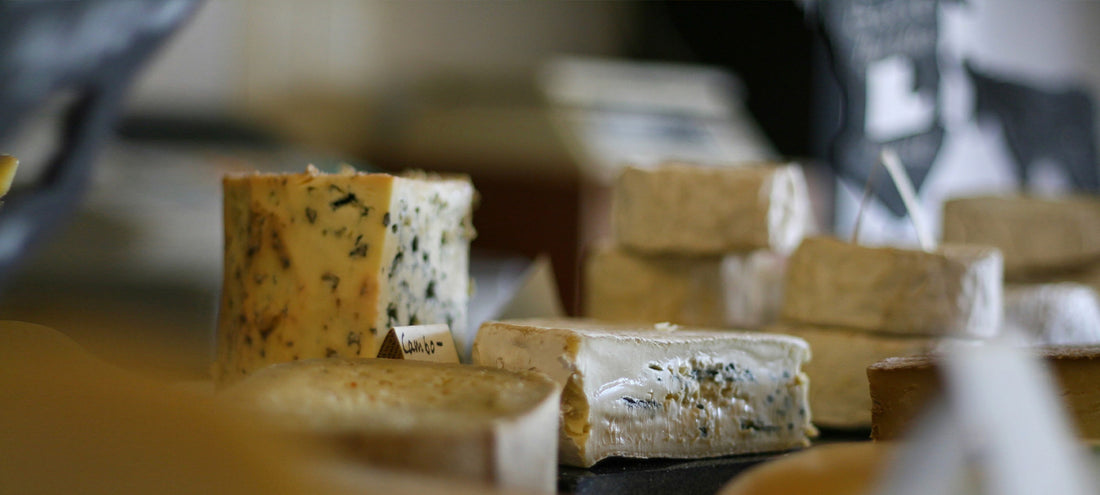Cheese plays a pivotal role in shaping regional identity, acting as a culinary ambassador for each culture. It serves as a culinary emblem, representing centuries-old traditions and reflecting the distinctiveness of each region. Let us explore various examples that demonstrate the remarkable relationship between cheese and regional identity.
Fromage Fantastique, France
France, renowned as the gastronomic capital of the world, boasts an impressive array of cheeses. The pungent Roquefort, hailing from the South of France, is a blue-veined cheese crafted from ewe's milk. Its unique flavor, derived from the limestone caves where it is aged, symbolizes the rugged landscape and terroir of the region. In Normandy, the creamy and indulgent Brie de Meaux is celebrated as the "King of Cheeses," epitomizing French sophistication and savoir-faire. The diverse range of French cheeses, from delicate chèvre (goat cheese) to complex Camembert, embodies the cultural richness and culinary expertise that define each French region.


For the love of Formaggio, Italy
Italy, another cheese-loving nation, holds a deep connection to its regional identity through cheese. Parmigiano-Reggiano, the "King of Cheeses" from the Emilia-Romagna region, is a hard, granular cheese aged for at least 24 months. Its nutty flavor and crumbly texture are a testament to the expertise of Italian cheese makers. Gorgonzola, originating from Lombardy, is a blue-veined cheese known for its creamy, tangy profile. Both cheeses exemplify the heritage and craftsmanship that define Italian gastronomy. Additionally, Italy's diverse regional cheeses such as Pecorino Romano, Mozzarella di Bufala Campana, and Asiago, each with its own unique characteristics, contribute to the nation's rich tapestry of flavors.
Gouda be good, Netherlands
Moving north to the Netherlands, the country's cheeses hold a special place in its cultural fabric. Gouda, a semi-hard cheese named after the city of Gouda, is globally recognized for its buttery flavor and smooth texture. The traditional round wheels of Gouda, aged and wax-sealed, are a symbol of Dutch cheese-making expertise. Similarly, Edam, with its distinctive spherical shape and red wax coating, represents the historical significance of cheese trading in the town of Edam. The Netherlands' cheese markets, such as the famous Alkmaar Cheese Market, offer a glimpse into the country's vibrant cheese heritage, reinforcing its regional identity.


Queso Fiesta, Spain
Spain's regional cheeses also play a significant role in defining its culinary identity. Manchego, made from sheep's milk in the La Mancha region, is a firm and flavorful cheese with a distinct crisscross pattern on its rind. Its production methods remain deeply rooted in tradition, reflecting the rural agricultural practices of the region. Tetilla, originating from Galicia, is a soft, creamy cheese shaped like a breast ("tetilla" means "little breast" in Spanish) and represents the local dairy farming culture. These cheeses, along with other Spanish specialties like Mahón-Menorca, Cabrales, and Idiazabal, celebrate the diverse landscapes and regional nuances of Spain.
Käse Chronicles, Switzerland
Switzerland's cheese heritage is dominated by the iconic Emmental. Known for its distinctive large holes, it exemplifies the meticulous craftsmanship and alpine traditions of Swiss cheese making. Emmental, made from cow's milk, is characterized by its nutty flavor and melt-in-your-mouth texture. The cheese is inseparable from the Swiss identity and is closely associated with the country's pastoral landscapes and charming mountain villages. Switzerland's other renowned cheeses, such as Gruyère and Appenzeller, further contribute to the country's cultural identity and reflect its commitment to quality and tradition.
It’s remarkable how a single item of food can speak volumes of the culture in which it was born. The layers in taste and texture tell stories of their making.
Explore new cheeses with those that enjoy your love for it. Host an evening of wine and cheese tasting with your best choices – that’s enough of a reason for celebration!



